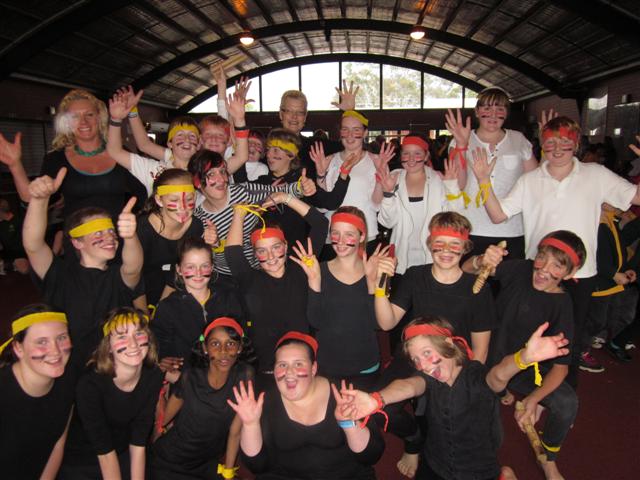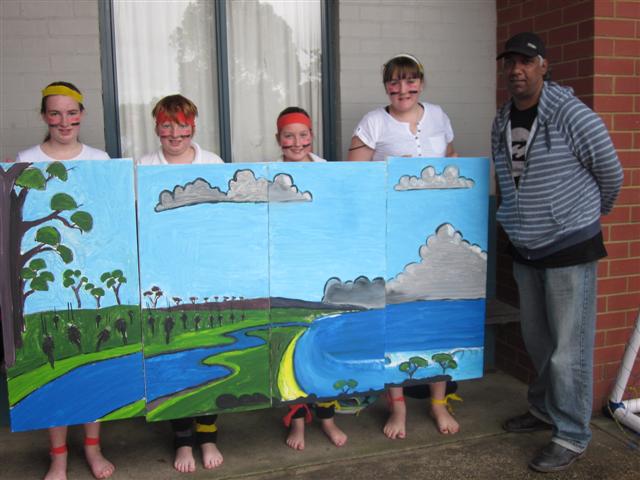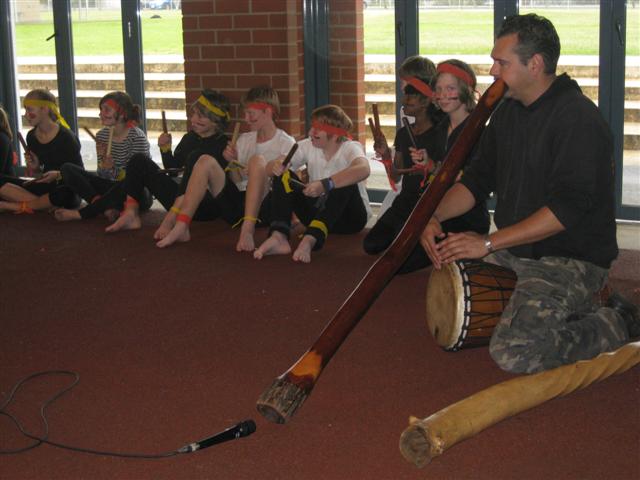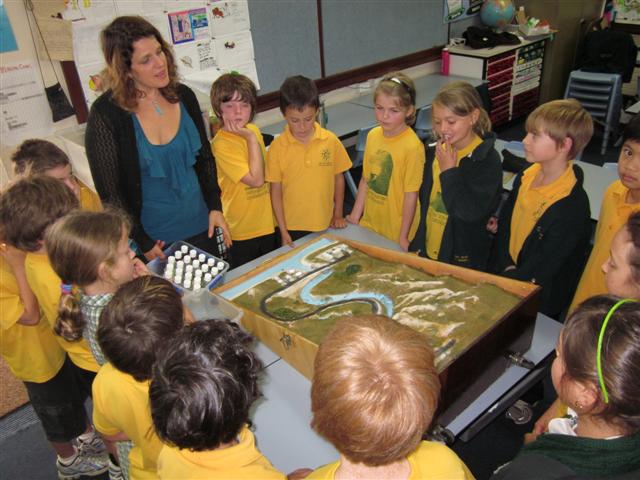Month: September 2011
Wetlands Visit
We are so lucky to have two really good journalists. Thanks, Mitchell, for this report on our Wetlands excursion with Tracey. 🙂
On Tuesday 13th September the Year 3s visited the Margaret River Wetlands with Tracey Muir from the Cape-to-Cape Catchment Group. The purpose of the visit was to investigate the macroinvertebrates that live there. They collected samples and were able to closely examine the individual tiny creatures.
Tracey also told them what habitats the macroinvertebrates use to keep themselves safe, such as:
• Logs and trees
• Rocks by the shore
• Pits in the sand at the bottom of the water
Other creatures that they found while collecting samples included tadpoles, fish, spiders and various insects. This showed that the wetlands is home to many more creatures than just macroinvertebrates, so it must be a healthy environment for animals to live in.
The Year 3s thoroughly enjoyed the trip and it was another very educational visit hosted by Tracey.
Wetlands Excursion on PhotoPeach
Mitchell’s Mysteries
If you posted a comment to guess the answer to Mitchell’s mystery, you should visit Mitchell’s Blog to see if you are the winner. 🙂
HEALTHY WETLANDS
Another thoughtful summary from our journalist, Sofia, on Tracey’s visit to talk about our macroinvertebrate excursion. Great job, Sofia! 🙂
On Tuesday the 6th of September we had another visit from Tracey from the Cape To Cape Catchment Group. First Tracey talked to us about macroinvertebrates. Macroinvertebrates are not microscopic, but they are small; small as in you can just see them with your own eyes. Macroinvertebrates are insects without a spine and they keep the wetlands healthy.
After that Tracey told us about some of the things we need to keep our wetlands healthy. Some of the things she suggested were things that gave macroinvertebrates homes or food. I would like to list some of the things that we need in our wetlands to keep them healthy. Here they are:
• Trees (to give shade and block out the sun) • Sticks (so the animals can make their homes) • Sedges and Rushes (provide food) • Rocks (give homes)
The reason these things are needed is what these things do. For example, the trees give shade and block the sun. It’s good to have a healthy environment in the wetlands because they are very important for the environment. Wetlands are important because they provide water sources for animals. Animals like fish and birds need the wetlands to survive. They also prevent flooding by holding water. In my opinion, I say wetlands are good to have because they keep lots of things like the macroinvertebrates healthy. We should do something about keeping our wetlands like they are. It’s best if you keep the environment how it is and not add anything to it or take away anything from it. We should keep our wetlands and macroinvertebrates healthy forever. Everyone enjoyed Tracey’s visit and learned a lot.
Sofia
BUNYIPS
ALL ABOUT BUNYIPS – Click on this site to complete your information gathering grid.
TRACEY’S VISIT by Sofia
While Mitchell is away, Sofia has agreed to be our Dolphinkids journalist. She has done an amazing job with her first report, on Tracey’s visit! Fabulous work, Sofia. 😎
On Tuesday the 30th of August our class had a visit from Tracey who is from the Cape to Cape Catchment Group. Tracey told us about some of the things that can pollute rivers like the Margaret River. I would like to list some of the things that can pollute the river. Here they are:
• Fertilizer (makes algae grow)
• Rubbish (can kill the Fish and Marron )
• Manure ( can change the colour of the river )
Each student came and each poured a bit of their things that pollute the river into the tub with water in it. Each time the water changed, whether its colour changed or it just got more disgusting.
We can make the river clean and healthy. Even if you do something very small you could make a big difference. Here I will tell you how you can do it.
HOW WE CAN STOP THE ALGAE FROM GROWING:
The thing that causes algae to grow is fertilizer. People use fertilizer for plants. You should never put it down the drain because anything you put down the drain will go down and into the river. So for your plants, instead of using fertilizer you could use manure. There are lots more ways but they are very different to this way. Most farmers use fertilizer for their plants but now they are starting to be organic. Lots of the pollutions that can happen are caused by farmers.
HOW WE CAN STOP THE COLOUR OF THE WATER CHANGING:
The thing that causes the water to change colour is the manure. Farmers have cows that poo in the river, however they can build fences around their properties so then there cows can’t escape and go and poo in the river. The poo is bad for the river and makes it somehow change colour. The colour it changes to is like a light brown kind of mixed with white. The colour of the river when its light brown makes people think that the river is disgusting and then they don’t want to go in it. So all farmers have to do is build fences around their properties and make sure their animals don’t escape, especially the cows.
HOW WE CAN STOP THE ANIMALS FROM DYING:
The thing that that causes most fish and jellyfish to die is the rubbish. Lots of people litter, when the rubbish goes down the drain it goes through a water cycle and ends up in the river. Lots of people don’t realize where their rubbish ends up, they just litter and don’t care. They never realize what they are doing. So all they do is litter. You can help by picking up bits of rubbish that you see lying around on the beach or in town. You can also help by doing your part on Clean Up Australia Day. Fish could get stuck in the plastic bag, which they can’t breathe in and then they die. Turtles could eat a plastic bag, which they can’t breathe in and then they die.
So those ways are just are a few ways of how you can keep our river healthy. Even though Tracey gave us things that are just examples of pollution, they still reacted like the real pollution. Our class had lots of fun learning about river pollution.
By Sofia Gaul
ANCIENT ASTRONOMERS by Sofia
Sofia has been very busy researching Ancient Astronomers. This is a prezi she made.





